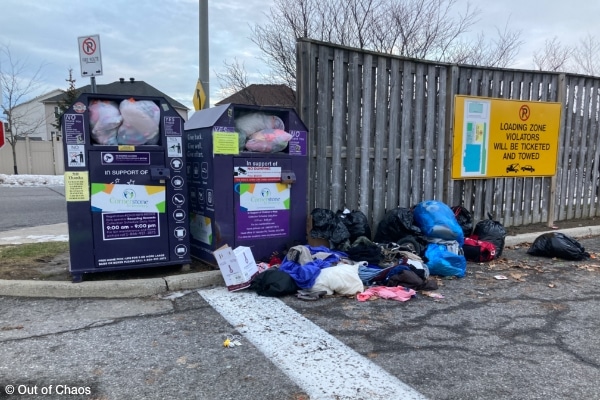
When we donate clothing, household goods, and toys, we want them to go to people who need them most. And if a non-profit agency sells our donations, we want them to use the money they earn to support people in need. But, if we don’t respect donation etiquette, our contributions may end up draining the charity’s funds. Here is how to ensure your goods do good.
Donate Quality Items
Clothing, Shoes, and Accessories: Clothing should be clean, mended, and free from stains and smells. In other words, items should be just like new or gently used. Do not donate items that need new buttons or zippers. Most charities do not have volunteers or equipment to repair clothing. Shoes should be clean and odour-free. Remove mud and dirt (and potential insects) before donating them. Do not donate shoes if they are worn or torn on the inside. Send garments in less-than-ideal condition to textile recycling.
Furniture: Do not donate furniture that is damaged, torn, stained, or shows signs of excessive use. Again, charities do not have the budget, volunteers, or equipment to repair or clean furniture. Please clean your items before donating them – including mattresses, box springs, and beds. Never donate items with a known or potential pest infestation (bedbugs, fleas, mice, etc.).
Household Goods: Only donate clean, working appliances. If you can’t fix that broken toaster oven, charities can’t either. Most charities appreciate receiving like-new or gently used home décor items but make sure they are clean before you donate them.
Technology: Most charities do not want electronics (phones, gaming systems, computers, etc.) older than five years. If you donate items, include chargers and cables if possible. Do not donate scratched or broken DVDs/CDs or game cartridges that don’t work. Don’t donate items with leaky batteries or corroded battery compartments.
Toys, Baby, Children’s Items: Do not donate broken toys or those showing signs of excessive use. You may not be able to donate baby/infant items (e.g., car seats, strollers, etc.) because of safety issues. Never donate items that are on Canada’s product recall list.
Health and Safety Items: Some charities will take medical or health devices such as crutches and canes but make sure they are in excellent condition before donating. Many charities will not accept personal protective equipment (e.g., helmets and padding for sports) because they cannot tell if these items will be safe for others to use. Never donate medications (prescriptions or over-the-counter types)! Return all medicines to a pharmacy (It’s free!).
Where and How to Donate
The first rule of donation etiquette is to make sure the charity will take what you have. Some charities accept almost anything because they connect with and sell to recycling companies in bulk. They also have enough volunteers, staff, and storage to accommodate a large quantity of donations. However, many charities have limited storage capacity, so they may not take the items you want to give when you are ready to donate them. Always contact the charity first by email or telephone before you drop off your items. And please be patient when waiting for a response. Often there are only part-time volunteers who respond to email and voicemail.
Next, do your best to drop off items during the charity’s preferred operating hours. This will ensure your goods are accepted right away. Do not dump your donation on their doorstep or in front of their bins. Bugs, mice, mould, and mildew can quickly take up residence, and the items end up in the landfill instead of going to people who need them.
Be understanding if a charity wants to charge you for picking up your donations. The truck may be a gift from a local business, and the driver may be a volunteer, but they still need to pay for fuel, maintenance, and insurance.
If you use a donation bin, ensure you know who owns it. There have been some cases of for-profit groups using look-alike bins to collect donations. These companies then sell the contributions to other nations at discount rates for a hefty profit. In doing so, they can jeopardize the sustainability of textile industries in those countries, contributing to increased poverty.
Finally, check out our resource list of where to sell or donate your clothing and household goods. Remember to respect donation etiquette when searching for an agency that can accept what you have to offer.
